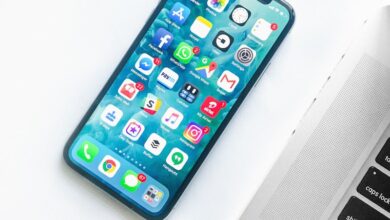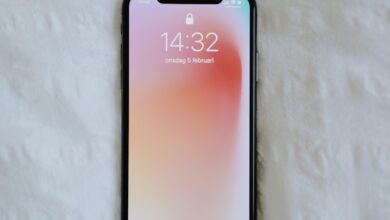Phone Formatting and Personal Data Protection

In a world where our smartphones have become an extension of ourselves, ensuring the security of our personal data is of paramount importance. Phone formatting plays a crucial role in protecting our digital privacy, as it wipes clean any traces of our personal information from the device. But what exactly is phone formatting, and how does it safeguard our sensitive data?
Phone formatting refers to the process of restoring a smartphone to its factory settings, erasing all the data stored on the device. This includes not only your contacts, messages, photos, and videos but also app data, browsing history, and login credentials. It’s like giving your phone a fresh start, wiping away any personal information that might be vulnerable to unauthorized access.



When it comes to personal data protection, phone formatting is a powerful tool. By performing a full format, you ensure that none of your sensitive information remains on the device when you sell, recycle, or dispose of it. It’s akin to shredding important documents before throwing them away, preventing anyone from piecing together your personal details.
But what about backups? Rest assured, phone formatting doesn’t affect the data you’ve backed up elsewhere. Services like iCloud for iOS or Google Drive for Android allow you to safely store your valuable data in the cloud, protecting it even if your phone is lost, stolen, or damaged. So, before formatting your phone, make sure to back up your essential files, contacts, and other information.

Keep in mind that phone formatting is not just a precautionary measure when parting with your device. Regularly formatting your phone can also help optimize its performance, clearing out unnecessary clutter that may slow it down over time. Think of it as tidying up your phone’s storage space, allowing it to run smoothly and efficiently.
Phone formatting is a vital aspect of personal data protection. By erasing all traces of our personal information, it helps safeguard our digital privacy and prevents unauthorized access to sensitive data. So, whether you’re selling your phone or simply optimizing its performance, performing a full format ensures peace of mind in an increasingly connected world.
Data Dilemma: The Impact of Phone Formatting on Personal Data Protection
Are you ever faced with the dilemma of what to do with your old phone when you get a new one? Should you sell it, give it away, or keep it as a backup? While these decisions may seem inconsequential, they can have a significant impact on your personal data protection. In this article, we will explore the data dilemma surrounding phone formatting and how it affects the security of your personal information.
When you format your phone, you essentially erase all the data stored on it, returning it to its factory settings. This process may seem like a convenient way to ensure that your personal information is wiped clean before you part ways with your device. However, the reality is not so simple. Formatting alone may not be enough to completely protect your data from falling into the wrong hands.
You see, formatting primarily removes the file system pointers that allow your phone to access data. But the actual data remains intact on the storage media until it gets overwritten with new information. This means that even after formatting your phone, someone with the right knowledge and tools could potentially recover your sensitive data, such as photos, messages, or even financial details.
To truly safeguard your personal data, it’s essential to go beyond mere formatting. One effective approach is to use data erasure software specifically designed for mobile devices. These tools employ advanced algorithms to overwrite your data multiple times, making it virtually impossible to recover. By utilizing such software, you can rest assured that your personal information will not fall into the wrong hands.
Another option to consider is encryption. Most modern smartphones offer built-in encryption features that scramble your data, making it unreadable without the decryption key. By enabling encryption before formatting or resetting your phone, you add an extra layer of protection to your personal information.
Unlocking the Secrets: Exploring the Pros and Cons of Phone Formatting for Data Privacy
In today’s digital age, where our smartphones store a plethora of personal information, ensuring data privacy has become paramount. One method that individuals can employ to safeguard their sensitive data is phone formatting. But what exactly does phone formatting entail, and what are its pros and cons? Let’s delve into this intriguing topic and uncover the secrets behind phone formatting as a means of protecting our cherished privacy.
First and foremost, let’s shed light on the pros of phone formatting. By performing a complete factory reset or formatting the phone’s storage, you erase all the data stored on the device. This includes personal photos, videos, messages, and even browsing history. This process acts like a reset button, giving you peace of mind knowing that your information is no longer accessible to prying eyes. Moreover, phone formatting can help improve the overall performance of your device, as it eliminates clutter and frees up valuable storage space.
However, just like any coin, phone formatting has its cons too. The most significant drawback is the irreversible nature of the process. Once you format your phone, there’s no going back. All your data will be permanently deleted, so it’s crucial to back up any important files before proceeding. Additionally, phone formatting requires time and effort. You’ll need to reinstall all your apps, set up accounts, and personalize your settings from scratch. It can be a tedious process, especially if you have numerous applications and complex configurations.

So, should you consider phone formatting for data privacy? The answer depends on your specific needs and circumstances. If you value your privacy above all else and want to ensure that your sensitive information remains secure, phone formatting can be an excellent option. However, if you have valuable data that you can’t afford to lose or if you find the reinstallation process overwhelming, alternative privacy measures like encryption and strong password protection might be more suitable for you.
Phone formatting offers a viable solution for safeguarding your data privacy. It wipes away your personal information and revitalizes your device’s performance. Nevertheless, it’s essential to weigh the pros and cons and take necessary precautions before embarking on this irreversible journey. By understanding the secrets behind phone formatting, you can make an informed decision that aligns with your privacy needs.
Guarding Your Digital Footprint: How Phone Formatting Can Safeguard Personal Information
Are you aware that your phone holds a treasure trove of personal information? From your contacts and messages to your browsing history and social media accounts, it’s all stored in the digital realm. But what if this wealth of data fell into the wrong hands? That’s where phone formatting steps in as your knight in shining armor, protecting your digital footprint and keeping your personal information secure.
Phone formatting is a simple yet powerful technique that wipes your device clean, erasing all data and restoring it to its original factory settings. It’s like hitting the reset button on your phone, ensuring that no trace of your personal information remains. By doing this regularly, you shield yourself from potential cyber threats and safeguard your privacy.
But how does phone formatting actually work? Think of it as tidying up a messy room. When you format your phone, it organizes all the scattered bits of data, deletes unnecessary files, and starts afresh. It’s like giving your device a fresh start, free from any digital clutter that could compromise your personal information.
Now, you might be wondering why regular phone formatting is necessary. Well, just like decluttering your physical space, keeping your digital space organized is crucial. Over time, our phones accumulate caches, temporary files, and other remnants of our online activities. These fragments can contain sensitive information, making us vulnerable to identity theft, hacking, or privacy breaches. By formatting our phones periodically, we eliminate these risks and ensure a clean slate for our digital lives.
So, how often should you format your phone? While there’s no hard and fast rule, experts recommend doing it at least once every six months. However, if you frequently download apps, visit unfamiliar websites, or feel that your device might have been compromised, it’s wise to format more frequently.
Guarding your digital footprint is paramount in today’s interconnected world. Phone formatting serves as a first line of defense, allowing you to protect your personal information and maintain your privacy. By regularly formatting your device, you can enjoy peace of mind knowing that your digital footprint is secure from prying eyes. So take control of your digital life, format your phone, and keep your personal information safe and sound.
The Art of Erasure: Delving into the World of Phone Formatting and Secure Data Removal
Have you ever wondered what happens to your personal data when you sell or dispose of your old smartphone? It’s not as simple as hitting the factory reset button and bidding farewell to your cherished device. In this digital age, where privacy and data security are paramount, the art of erasure has emerged as a crucial process to safeguard sensitive information.
Phone formatting and secure data removal techniques play a vital role in protecting your personal and confidential data from falling into the wrong hands. When you format your phone, it goes through a meticulous process that wipes out all the existing data, settings, and applications, restoring it to its original state. However, simply performing a basic factory reset may not be enough to ensure complete data eradication.
To achieve thorough data removal, advanced methods must be employed. One such technique is data overwriting, which involves replacing the existing data with random information multiple times. This ensures that any remnants of the previous data are overwritten and virtually impossible to recover. By incorporating these stringent measures, the risk of unauthorized access to your personal files is significantly minimized.
Several software solutions specialize in secure data removal. These programs utilize complex algorithms to overwrite data and eradicate any traces of it. They can even target specific areas of the device’s storage, like the operating system, ensuring comprehensive data eradication. Investing in reputable data erasure software provides an added layer of protection for your privacy and peace of mind.
When it comes to ensuring the security of your personal data, phone formatting and secure data removal are the gatekeepers. Think of them as the masters of disguise, camouflaging your private information so that it can never be recovered. Just as a skilled artist layers vibrant colors to create a masterpiece, these techniques layer security protocols to create a shield around your data.
The art of erasure encompasses phone formatting and secure data removal techniques, which are crucial for safeguarding your personal information. By employing advanced methods like data overwriting and utilizing reputable data erasure software, you can ensure that your data remains secure even after you let go of your old phone. So, the next time you bid adieu to an old device, remember the artistry involved in erasing your digital footprint and preserving your privacy.




